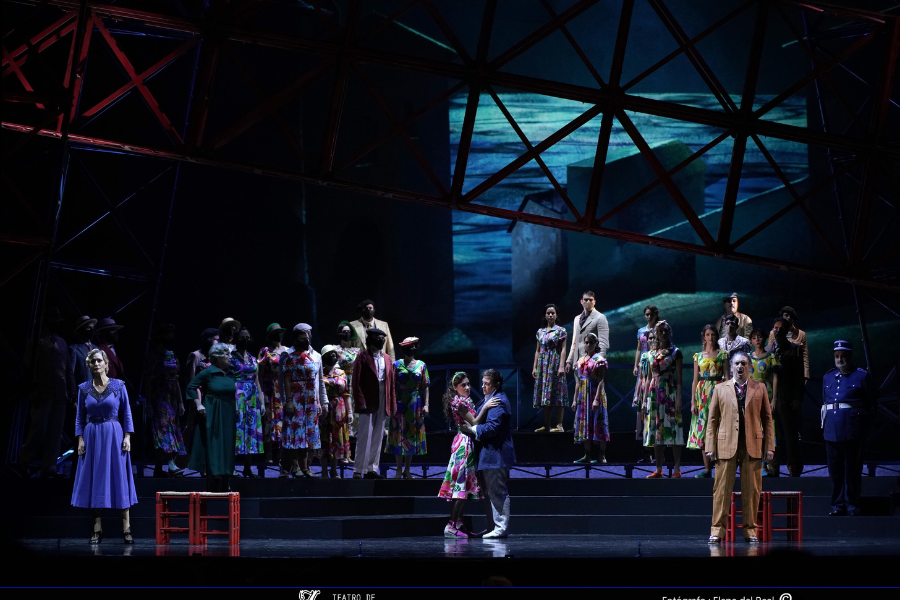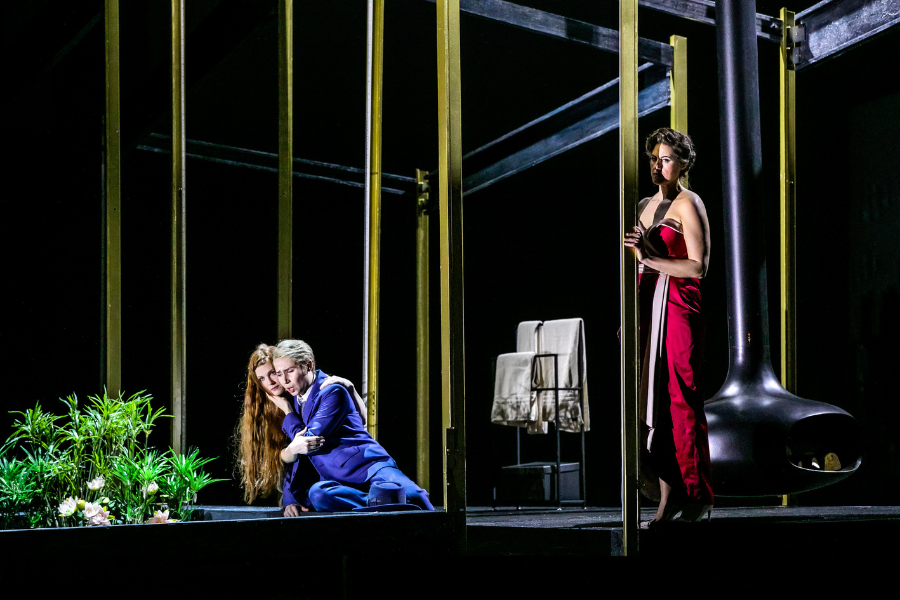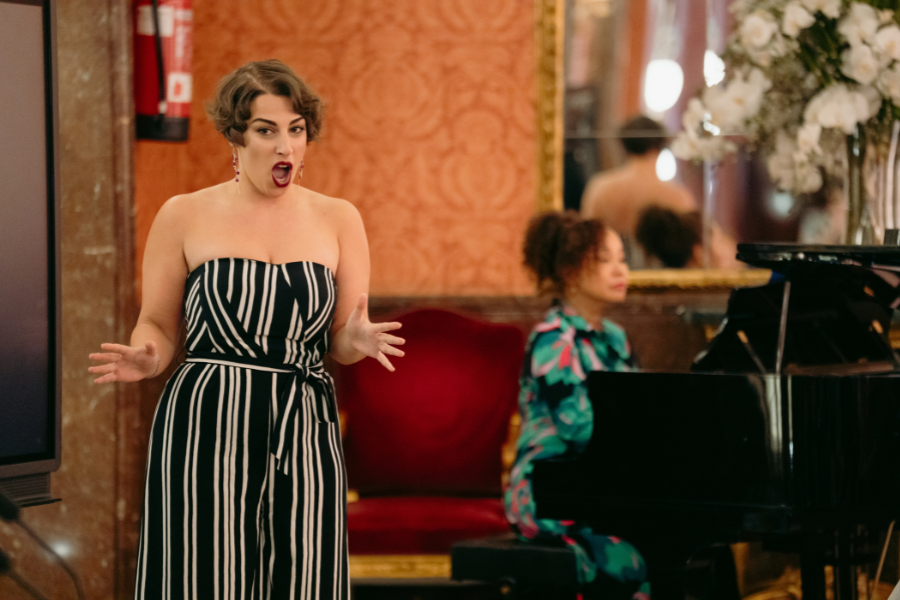El Teatro de la Maestranza se incorpora a Ópera Latinoamérica

Inaugurado el 2 de mayo de 1991, el Teatro de la Maestranza se ubica en medio de un escenario histórico de la ciudad de Sevilla, cercano a la Torre del Oro, la Iglesia de la Santa Caridad y a la Plaza de toros de la Real Maestranza. Obra de los arquitectos Aurelio del Pozo y Luis Marín, el coliseo andaluz ofrece una programación “dirigida a todos los públicos y conformada por producciones propias, coproducciones con teatros y festivales, ciclos temáticos, recitales especiales o actuaciones en gira”. En esta entrevista, Javier Menéndez, director general del teatro, profundiza en las razones de su asociación a Ópera Latinoamérica, explica el modelo de gestión y aborda la forma en que la programación se acerca a los diferentes públicos culturales de la ciudad.
Sevilla ha sido inspiración de artistas, poetas, músicos y compositores. Particularmente, es una ciudad que vive en el imaginario de la ópera, con más de 150 obras líricas ambientadas en ella. Desde Scarlatti (Creonte) y Haendel (Rodrigo), pasando por Mozart (Las bodas de Fígaro), Bizet (Carmen), Beethoven (Fidelio) y Rossini (El barbero de Sevilla), hasta Prokofiev (Compromiso en un monasterio) y Milhaud (La mère coupable), Sevilla ha encantado por su rica tradición histórica y la vibrante cultura andaluza, un crisol de influencias sociales y artísticas. Irónicamente, hasta 1991, la capital de la comunidad autónoma de Andalucía no contaba con un espacio ni con instalaciones adecuadas para programar óperas en todo su esplendor.
A fines de la década de 1980, un proyecto de la Diputación Provincial de Sevilla escogió a los arquitectos Aurelio del Pozo y Luis Marín y les encomendó la misión de diseñar una infraestructura acorde a las necesidades de un teatro lírico, pero que también acogiera tanto espectáculos musicales de grandes formaciones sinfónicas como obras de teatro.
Luego de iniciadas las obras en 1987, el Teatro de la Maestranza abrió sus puertas en 1991 con una ceremonia de inauguración encabezada por la entonces reina Sofía y un concierto inaugural que corrió a cargo de la Orquesta Sinfónica de Sevilla, dirigida por el yugoslavo Vjekoslav Sutej, y un programa compuesto por obras de Ruperto Chapí, Sergei Rachmaninov y Nicolai Rimsky-Korsakov.

Para el diseño de la sala, los arquitectos del Teatro de la Maestranza, Aurelio del Pozo y Luis Marín, fueron asesorados por el profesor Lothar Cremer, quien fue coautor de la acústica en la Philharmonie de Berlín.
Desde ese entonces, el Teatro de la Maestranza se ha posicionado como un teatro ineludible en el panorama lírico y cultural de España, con 30 temporadas y más de 2 mil espectáculos programados en su reciente historia. La infraestructura está dotada de un nivel técnico que se expresa con toda su magnitud en la sala principal del teatro, la cual se encuentra cubierta por una estructura de madera de formas convexas y planos truncados y ofrece una acústica que ha sido destacada por figuras del espectáculo como el bailarín Ángel Corella.
Estas características técnicas sitúan al teatro en una posición privilegiada “dentro de Andalucía, pero también dentro de todo el territorio nacional, en una posición ambiciosa de internacionalización e influencia importante dentro de la producción y exhibición de espectáculos líricos”, asegura Javier Menéndez, director general del Teatro de la Maestranza.
Hoy, el Teatro de la Maestranza se incorpora a Ópera Latinoamérica y se convierte en el séptimo teatro español en unirse a la organización. Y es una decisión que, además, viene acompañada de una carga histórica. “Sevilla ha sido históricamente el punto de origen de los primeros contactos entre Europa y América. Ya había varios teatros españoles vinculados a OLA. Entendíamos irrenunciable la inclusión de La Maestranza de Sevilla en dicho grupo”, señala Menéndez.
En esta entrevista, el director general del teatro aborda distintos puntos de la gestión del teatro, así como también el acercamiento a los distintos públicos y, además, adelanta algunas óperas destacadas de la próxima temporada en el Teatro de la Maestranza.
¿Por qué el Teatro de la Maestranza decidió unirse a Ópera Latinoamérica?
Existen varios motivos, algunos muy obvios. Por ejemplo, extender, fortalecer y estrechar lazos con todos los teatros latinoamericanos, con los que nos unen históricos vínculos culturales. La posibilidad de estar más conectados a todo el sector lírico que representa a una parte tan importante de la geografía mundial, con espacios históricos y otros en desarrollo, bajo unas bases muy ambiciosas en cuanto a la voluntad de protagonismo en el desarrollo sociocultural de las comunidades donde se asientan, nos proporciona muchísimas posibilidades de intercambio y aprendizaje.
Por otro lado, Sevilla ha sido históricamente el punto de origen de los primeros contactos entre Europa y América. Ya había varios teatros españoles vinculados a OLA (Auditorio de Tenerife, Palau de Les Arts de Valencia, Teatro Real o Gran Teatre del Liceu). Entendíamos irrenunciable la inclusión del Maestranza de Sevilla en dicho grupo.
¿Qué lugar tiene este espacio en la vida cultural de Sevilla y el panorama artístico general de España?
El Teatro de la Maestranza es la infraestructura escénica más dotada a nivel técnico, acústico y con dimensiones adecuadas para acoger grandes espectáculos operísticos. Eso nos sitúa, dentro de Andalucía, pero también dentro de todo el territorio nacional, en una posición ambiciosa de internacionalización e influencia importante dentro de la producción y exhibición de espectáculos líricos.
Además, Sevilla es la ciudad que más ha inspirado a grandes compositores, con más de 150 obras entre las que se cuentan algunas de las más importantes y populares, como El barbero de Sevilla, Don Giovanni, Las bodas de Fígaro, Carmen, Fidelio, La forza del destino, además de otras mucho menos conocidas como Maria Padilla de G. Donizetti, Conchita de R. Zandonai, El gitano por amor de M. García o Chérubin de J. Massenet.

La zarzuela Los gavilanes, de Jacinto Guerrero, forma parte de la próxima temporada lírica del Teatro de la Maestranza. Foto: Elena del Real.
En su sitio web, el teatro afirma que “un amplio número de administraciones públicas, empresas privadas, fundaciones y ciudadanos colaboran para fortalecer el desarrollo y consecución de los objetivos culturales, educativos y sociales que son la razón de ser del Teatro de la Maestranza desde que fue concebido”. ¿Cómo se logra ese objetivo? ¿Qué estrategias de relación tienen con esos diferentes actores?
Ese es el modelo de gestión y funcionamiento que impera en España. Un modelo de participación pública y privada equilibrado y que asegura la viabilidad del proyecto artístico del teatro, variado en cuanto a las diversas disciplinas artísticas, aunque en nuestro ADN el protagonismo sea del repertorio lírico, la danza y la música sinfónica. Esa diversidad se refleja en los actores que participan y apoyan nuestra gestión.
Las administraciones públicas en todos sus ámbitos (local, provincial, autonómico y estatal) forman nuestro consejo de administración. La participación de las instituciones, patrocinadores y público en general se logra a partir de un compromiso bidireccional, en el que por parte del teatro estamos obligados a asegurar un discurso artístico estimulante, equilibrado y atractivo, además de una gestión eficiente y realista.
¿Cómo se acercan a los diferentes públicos de la comunidad? ¿Tienen proyectos específicos de formación, educación, difusión, innovación, etcétera?
Principalmente a través de una oferta artística variada y diversa, combinando una política de precios, abonos y paquetes que hacen accesibles a todo tipo de público las propuestas del teatro. A través de políticas de acercamiento a nuevos públicos, principalmente dirigidas al sector poblacional menor de 30 años, muy especialmente a estudiantes: Prestrenos a 10 Euros, acceso a ensayos generales, 80% de descuento el día antes y el mismo día del espectáculos sobre todo el aforo del teatro. También estamos trabajando mucho la difusión online con proyectos específicamente dirigidos al público joven.

Alcina, de Haendel, se programará por primera vez en el Teatro de la Maestranza durante la próxima temporada lírica.
¿Cómo se proyecta la programación lírica del Teatro de la Maestranza para este 2023? ¿Qué producciones o actividades líricas puedes destacar?
Estamos muy ilusionados con la programación de la temporada 23/24 que iniciaremos en septiembre. Destacable el Tristan und Isolde que inaugura la temporada, con la dirección musical de Henrik Nánási; la presencia de Alcina por primera vez en el Maestranza, con la Orquesta Barroca de Sevilla en el foso, dirigida por Andre Marcon y dirección de escena de Lotte de Beer; el estreno mundial de La bella Susona, del compositor sevillano Alberto Carretero o el cierre, con la nueva producción bajo dirección de escena de Christiane Jatahy, del Nabucco coproducido con Ginebra, Luxemburgo y Amberes.
También tendremos por primera vez la zarzuela Los gavilanes de Jacinto Guerrero y una ópera de cámara contemporánea en colaboración con el Teatro Lope de Vega, Lazarillo de David del Puerto. Un recital de Javier Camarena, el XIX certamen nuevas voces ciudad de Sevilla y la ópera Norma completan la oferta lírica de la temporada. Les invito a echar un vistazo a nuestra página web para tener una idea completa de toda nuestra oferta para la temporada 23/24.






